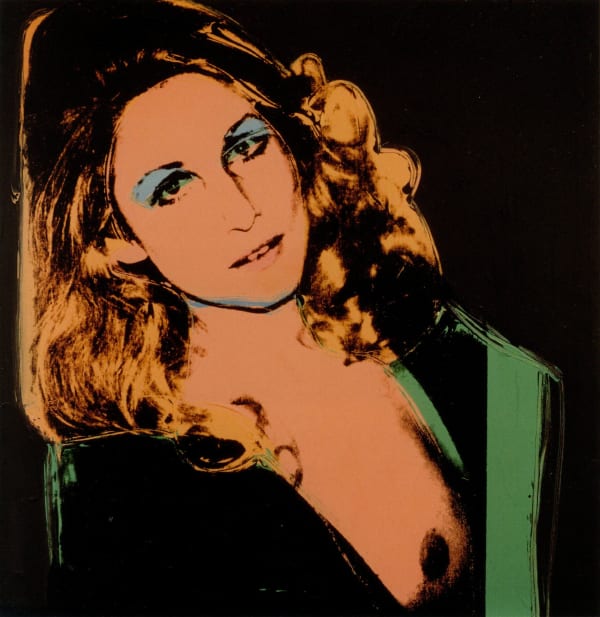Andy Warhol, born in Pittsburgh in 1928 and dying in New York in 1987, stands as a towering figure in twentieth-century art, widely regarded as the leading exponent of the Pop Art movement. His work blurred the boundaries between high art and popular culture, transforming everyday consumer goods and celebrity images into iconic artworks. By embracing mass production techniques and commercial aesthetics, Warhol challenged traditional notions of artistic originality and authorship. His innovative approach not only redefined the role of the artist but also mirrored and critiqued the burgeoning consumerism of postwar America.
Warhol began his career in advertising, learning early the seductive power of surface and brand. By the early 1950s, he had already begun to attract attention in the New York art world, holding his first solo show at the Hugo Gallery in 1952. But it was in 1962, with the unveiling of his now-infamous Campbell’s Soup Cans, that Warhol made his most declarative statement. These silkscreened paintings of supermarket staples did not just collapse the boundary between high and low – they made that collapse feel inevitable. What followed was a torrent of innovation. Film, performance, printmaking, installation, video, sculpture – Warhol moved across mediums with a kind of detached intensity, always observing, always absorbing. In 1964 he opened The Factory, a silver-painted studio that became a stage for the era’s most vivid and volatile characters. Artists, musicians, drag queens, socialites – anyone drawn into Warhol’s orbit became part of the work itself. The questions he raised about authorship, originality, and the commodification of culture still reverberate. His screen-printed portraits, endlessly reproduced and ruthlessly flattened, turned Marilyn Monroe, Elvis Presley, and even Mao Zedong into icons of the spectacle age. But beneath the gloss and glamour there was often a chill – an awareness of death, repetition, and the emptiness that can follow mass attention.
Warhol’s formal art education began at the Carnegie Institute of Technology, where he studied from 1945 to 1949 before relocating to New York to pursue a career in advertising. His artistic career gained momentum in the 1950s, with his first solo exhibition at the Hugo Gallery in New York in 1952. His work has since been celebrated globally, with numerous retrospectives held at prestigious institutions. Warhol’s legacy is preserved in major public collections, including The Metropolitan Museum of Art, New York; Museum of Modern Art (MoMA), New York; Guggenheim Museum, New York; and Tate, London. The establishment of The Andy Warhol Foundation for the Visual Arts in 1987, shortly after his death, further solidified his impact on the art world. Additionally, two museums – the Andy Warhol Museum in Pittsburgh and the Warhol Museum of Modern Art in Slovakia – are dedicated to his life and work.
Enquire
-

Homage to Jane Holzer: Andy Warhol and Les Lalanne
3 - 20 Mar 2022 Palm BeachHomage to Jane Holzer: Andy Warhol and Les Lalanne. Guest curated by Jane Holzer – Warhol’s muse fondly known as ‘Baby Jane Holzer’, a passionate collector of Claude and François-Xavier Lalanne, and a lifelong native of Palm BeachRead more -
EXPRESSION
A Philosophical Portrait of Humankind, works selected by Martin Klosterfelde 27 Nov 2013 - 15 Feb 2014 Hong KongExpression: A Philosophical Portrait of Humankind presents a unique survey of works grouped under the theme of portraiture. While portraiture is a traditional, time-honoured genre, this exhibition offers a new...Read more


